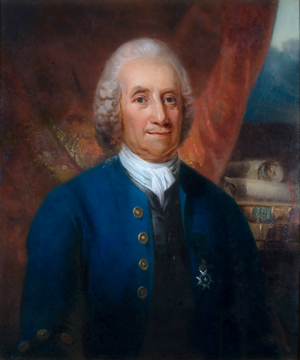Emanuel Swedenborg (nonfiction)
Emanuel Swedenborg (/ˈswiːdənˌbɔːrɡ/; About this sound Swedish pronunciation (help·info); born Emanuel Swedberg on 29 January 1688; died 29 March 1772) was a Swedish scientist, philosopher, theologian, revelator, and mystic. He is best known for his book on the afterlife, Heaven and Hell (1758).
Swedenborg had a prolific career as an inventor and scientist. In 1741, at age 53, he entered into a spiritual phase in which he began to experience dreams and visions, beginning on Easter weekend of 6 April 1744. This culminated in a 'spiritual awakening', in which he received revelation that he was appointed by the Lord to write The Heavenly Doctrine to reform Christianity. According to The Heavenly Doctrine the Lord had opened Swedenborg's spiritual eyes, so that from then on he could freely visit heaven and hell and talk with angels, demons and other spirits; and the Last Judgment had already occurred, in 1757.
For the remaining 28 years of his life, Swedenborg wrote eighteen published theological works, and several more which were unpublished. He termed himself a "Servant of the Lord Jesus Christ" in True Christian Religion, a work he published himself.
Swedenborg proposed many scientific ideas during his lifetime. In his youth, he wanted to present a new idea every day, as he wrote to his brother-in-law Erik Benzelius the younger in 1718. Around 1730, he had changed his mind, and instead believed that higher knowledge is not something that can be acquired, but that it is based on intuition. After 1745, he instead considered himself receiving scientific knowledge in a spontaneous manner from angels.
In the News
Fiction cross-reference
Nonfiction cross-reference
External links:
- Emanuel Swedenborg @ Wikipedia
